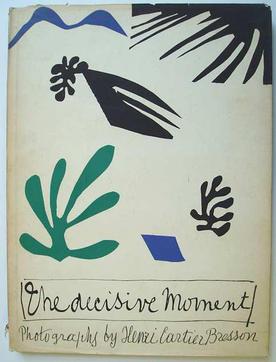Kim Sichel on Making Strange: the Modernist Photobook in France
New podcast by Kim Sichel (AH) discussing her recent book, Making Strange: the Modernist Photobook in France (Yale 2020).

In March, Boston University associate professor of the history of photography and modern art and 2015 BUCH Henderson Senior Research Fellow Kim Sichel spoke with Jessica Holahan on the Yale University Press Podcast series (Ep. 79 – The Wild World of Modernist Photobooks in France in the Early 20th Century) about her recently published book. Sichel’s 2020 publication, Making Strange: The Modernist Photobook in France, examines works from the 1920s through the 1950s, France’s golden age of photobook production. Sichel’s analysis of photobooks from this period examines not only photographs, but the design of the photobooks themselves and the context within which they were created, thus demonstrating the many factors that make these books so significant in the context of modernist art and beyond.

Sichel’s work emphasizes the significance of the physical photobooks, noting that her title refers not only to the strange subject matter of the photographs, but to the distinct proportions and layouts of the photobooks themselves. In the podcast, she speaks to an “intersection of graphic design and the design of the book and the text and the image” which creates a viewing experience beyond an individual photograph” (19:30). Germaine Krull’s 1928 Métal, for instance, was published with numbered but unbound and untitled photographs, allowing the viewer to determine the orientation and perspective from which they wished to view the images, without even a title to guide their imagination. In Brassaï’s 1932 Paris de nuit, the physical printing of the book similarly becomes part of the viewing experience, as the spiral binding and black pages create a format in which, Sichel explains, “whatever dark thing that Brassaï is trying to show you spills right off the page” (7:30). The darkness would sometimes even spill into the viewer’s own life, with Sichel noting that Brassaï’s photogravure method of printing meant that the page turner was likely to leave the experience with some black ink on their fingers. By formatting photobooks in such nontraditional ways, the avant-garde artists profiled in Sichel’s work compel the viewer to engage with the images in a new way, pushing the boundaries of traditional photography.

The physicality of the books as a part of creating a viewer experience was in line with surrealist thought, and the photos contained within the volumes further reflect their cultural context. As the title suggests, the modernist imagery Sichel focuses on is peculiar, disorienting, and just plain weird. Sichel explains that such imagery “reflects the cultural unease and cacophony of the time” (2:49). Krull’s Métal celebrates a post-war rebuilding of France with its images of industrial structures, while Henri Cartier-Bresson creates a wistful ode to pre-war European culture in the first half of his 1952 Images à la Sauvette. In Pierre Jahan’s La Mort et les statues (1946), French statues which are being melted by the German occupation to be used in making ammunition, stand in for casualties of the war and are coupled with poetry by Jean Cocteau to provide a uniquely French avant-garde experience of “universal lament” (12:54). The photographs covered in Sichel’s work serve as an important reminder of the power of art in reflecting the spirit of different times.
Through Making Strange, Sichel brings the French modernist experience to the foreground of a field that is often dominated by American and German artistic expression.